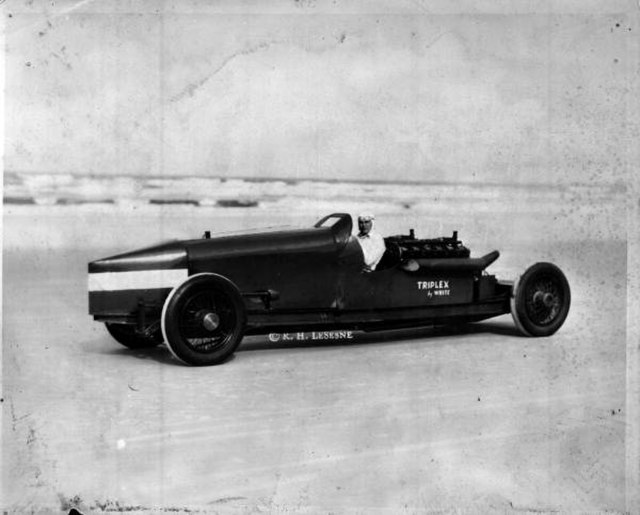The land speed record (LSR) or absolute land speed record is the highest speed achieved by a person using a vehicle on land. By a 1964 agreement between the Fédération Internationale de l'Automobile (FIA) and Fédération Internationale de Motocyclisme (FIM), respective governing bodies for racing in automobiles and motorcycles, both bodies recognise as the absolute LSR whatever is the highest speed record achieved across any of their various categories. While the three-wheeled Spirit of America set an FIM-validated LSR in 1963, all subsequent LSRs are by vehicles in FIA Category C in either class JE or class RT.
ThrustSSC, driven by Royal Air Force pilot Andy Green, holds the current land speed record at 1,227.986 km/h (763.035 mph) set October 15, 1997.
Ralph DePalma in his Packard '905' Special at Daytona Beach in 1919
The White Triplex in 1928, driven by Ray Keech
Dorothy Levitt, in a 19 kW (26 hp) Napier, at Brooklands, England, in 1908
In everyday use and in kinematics, the speed of an object is the magnitude of the change of its position over time or the magnitude of the change of its position per unit of time; it is thus a scalar quantity. The average speed of an object in an interval of time is the distance travelled by the object divided by the duration of the interval; the instantaneous speed is the limit of the average speed as the duration of the time interval approaches zero. Speed is the magnitude of velocity, which indicates additionally the direction of motion.
Speed can be thought of as the rate at which an object covers distance. A fast-moving object has a high speed and covers a relatively large distance in a given amount of time, while a slow-moving object covers a relatively small amount of distance in the same amount of time.





